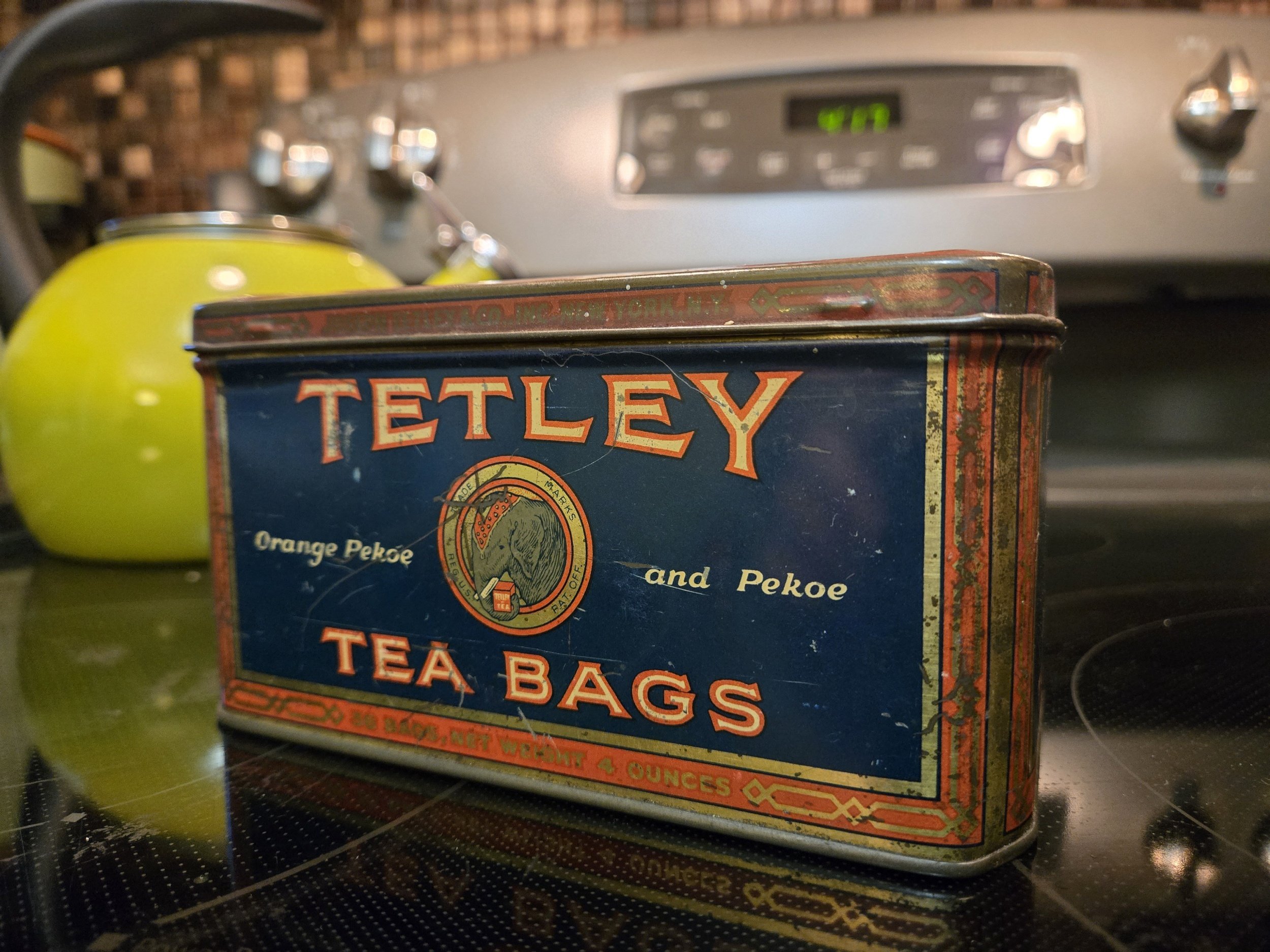Vintage Tetley Tea Tin: Steeped in Feminism?
How a humble tea tin reveals the history of women, consumer culture and domestic life.
I own a vintage Tetley tea tin, a piece I believe is approaching 100 years old. It’s a tiny time capsule, offering a glimpse into historical women’s lives, their roles in the home and the expectations society imposed on them. And much like tea itself (or so I’m told; I don’t like tea), the story is both warming and complex.
Women and Tea: A Timeless Brew
The very act of tea drinking has long been associated with ladies, particularly in the West. By the 18th century, tea was no longer a luxury for the elite, but an everyday ritual, one that women participated in and helped to define. Tea gatherings and tea rooms became an acceptable way for women to network and exchange ideas, even in a society that often excluded them from public spheres. Women in the early 19th century weren’t allowed in most restaurants out of fear that they might distract the businessmen at their important lunch meetings. I shit you not.
By the time Tetley started selling tea in tins in the late 19th and early 20th centuries, women were firmly established as the managers of domestic life and the keepers of household tradition – lucky us! For many, a quiet cup of tea was a rare moment of respite amid otherwise endless demands. And tea was more than a beverage; it had become a comfort and sometimes even an act of rebellion.
Tea and the Suffrage Movement
The Tetley tea tin is a lasting symbol of 20th century female domesticity. Women were not only the primary drinkers but also the ones responsible for brewing and serving it, creating the customs and rituals of tea time. And yes, these rituals brought a sense of comfort and even community to those who participated, but they also leaned into the all-too-common expectation that women should prioritize the comfort of others above their own.
But there’s a cool twist: in some cases, tea was a form of subtle resistance. For some women, tea gatherings provided a venue for the discussion of critical issues like suffrage, labor rights and education. The official launch of the women’s suffrage movement in Seneca Falls, NY, in July 1848 began at a tea gathering of a few bad-ass women a few weeks earlier.
While my own vintage Tetley tea tin is likely from two decades after women were granted the right to vote, it’s still pretty cool to realize the (albeit loose) connection to this historic event.
Consumer Culture and the Power of Women
By the 20th century, companies like Tetley recognized women’s roles as key household decision makers. Advertising tins targeted them directly, emphasizing quality, convenience and even status. These tins were not only practical, they were also decorative, designed to sit on a shelf or counter as a symbol of good taste.
The vintage Tetley tea tin represents both the expectations placed on women to keep a perfect home and women’s quiet power as key consumers shaping a marketplace. Women were fueling the tea industry, even if their influence went unrecognized.
Longevity and Sustainability
The fact that my vintage Tetley tea tin has survived for the better part of a century is a testament to durability. These tins were made to last and were often repurposed by resourceful women, storing sewing supplies or other small items. This is another hallmark of women’s often-overlooked contributions: the ability to make something last, and find value where others see none.
Some Detective Work: My Vintage Tetley Tea Tin
My Tetley tea tin is likely from the late 1930s or early 1940s, given its prominent elephant head logo (which seems to have been used in the 1920s-1940s), the use of lithography in the artwork, the overall style of the design and the fact that “-37” is stamped on the bottom. From my research, that may be a manufacturing code identifying the year this tin was produced.
However, my tin originally held 36 “large size” tea bags. From what I can find, “large” appears to mean they were intended to brew pots of tea for group consumption rather than for individual cups, as is more common today. And it seems that while tea bags were first sold by Tetley in the US in the late 1930s, they didn’t move into mass production of tea bags until 1940. So in spite of the stamp, my tin may actually date to the early 1940s.
I found my tin in a delightful little antique shop in Barnegat Light on Long Beach Island in New Jersey. I purchased it a few years ago along with a tobacco tin and it has since sat in my dining room, holding the baby silverware I used as an infant, which my mother saved and gave to me when my son was born (resourceful and thrifty!).
Today, vintage Tetley tea tins are beloved by collectors. Their bold designs and intricate lettering reflect the aesthetic of their time. For those of us lucky enough to own one now, these vintage advertising tins can remind us of the lives of the ordinary women who brewed the tea, managed the households and then thriftily saved and repurposed the tins.

